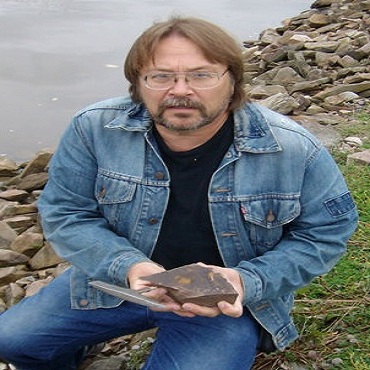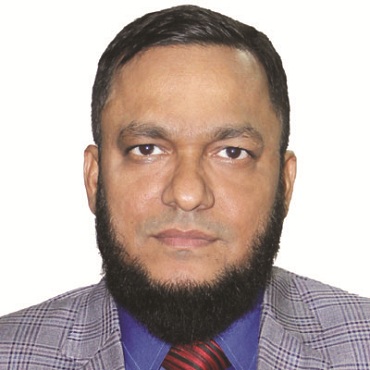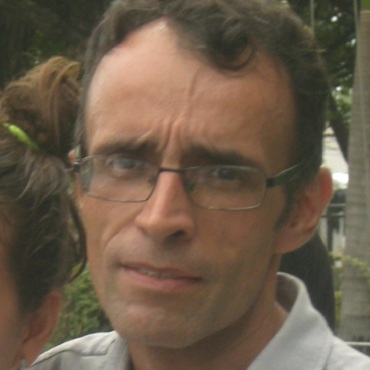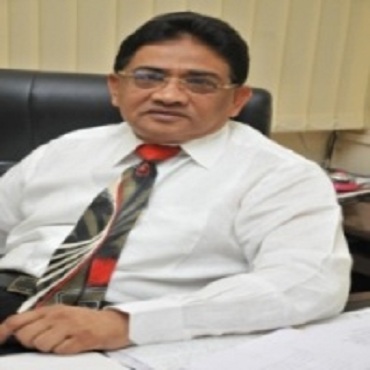
Earthscience 2019
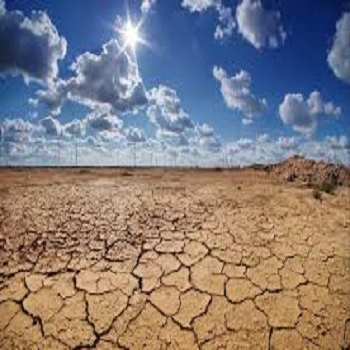
Theme: Improve understanding of the Earth Sciences and Abrupt Climate Change
Join the 3rd International Conference on Earth Science & Climate Change with theme Improve understanding of the Earth Sciences and Abrupt Climate Change which will be held on April 15-16, 2019, at Toronto, Canada, that covers wide range of critically important sessions. Earth Science 2019 is diagram to bring collectively all leading academic scientists, researchers and studies pupils to trade and percentage their studies and research results on all aspects of Earth technology and weather exchange. It additionally gives a gold standard interdisciplinary platform for researchers, practitioners, and educators to give and discuss the most recent innovations, tendencies, and worries in addition to sensible challenges encountered and answers followed in the fields of earth technological know-how and Climate Change. Earth Science 2019 congress is the platform to learn and proportion the thoughts all over the world. This congress is the brainchild of the pinnacle professor, scientist, commercial enterprise pals, community and young researcher. The conference not only gives you the opportunity to fulfill your business idol, scientist, and different renowned personality but also your chances are greatly improved when you’re sharing the same area. This may also help to overcome natural calamities with lots of tactic on direction and flow of technology for the country and the arena in subsequent decade.
Target audience
- Climatologist
- Meteorologist
- Geologist
- Environmental researchers
- Hydrologist
- Marine biologist
- Oceanographer
- Ecologists
- Chemical researchers
- Environmental engineers
- Waste management researchers
- Business entrepreneur
- Astronomers
- Earth science associationYoung research forum
Earth Science 2019 Highlight are listed below
- Earth Science and Hydrology: Surface Hydrology/Surface Water
- Geological Hazard Assessment and Earthquake Geology
- Earth, Ecology and Ecosystems
- Petrology, Mineralogy and Mineral Processing
- Agriculture and Bio resources
- Climate change and Climatology
- Toxicology and Environment health
- Pollution and Climate change
- Environmental Designing
- Carbon Forming and Carbon cycle
- GIS, Remote Sensing and Geospatial Sciences
- Atmospheric Sciences and Meteorology
- Global warming effects and causes
- Marine geosciences and Oceanography
- Sustainability and Climate change
- Science behind Climate Change
- Renewable energy to mitigate climate change
- Green Initiatives, products and climate change
- Climate hazards and Refugees
- Ecology and Ecosystems
- Health and Climate changes
Session 1: Earth Science and Hydrology: Surface Hydrology/Surface Water
Earth Science and Hydrology, the fields of study involves the Earth surface, its waters, and the air that envelops it. Major parts are the geologic, hydrologic, and atmospheric sciences. Hydrology subdivides into surface water hydrology, groundwater hydrology, and marine hydrology. Domains of hydrology include hydrometeorology, surface hydrology, hydrogeology, drainage-basin control and water quality, in which water performs the important position. The significant purpose of the Earth sciences is to recognize the existing capabilities and the past evolution of the Earth and to apply this knowledge, wherein appropriate, for the advantage of humankind. Because of this the number one issues of the Earth scientist are to study, describe, and classify all the capabilities of the Earth, whether or not characteristic or no longer, to generate hypotheses with which to provide an explanation for their presence and their improvement,. On this manner the most attainable, ideal, and long-lasting thoughts are advanced.
Related Societies:
Africa Centre for Climate and Earth Systems Science, Geological Society of London, UK; European Science Foundation, France; American Chemical Society ,USA; International Arctic Science Committee, USA; Coast Geological Society, USA; Oklahoma Climatological Survey, USA ;Royal Society of New Zealand, New Zealand; International Glaciological Society, UK; Australian Marine Sciences Association, Australia; American Association of State Climatologists, USA; Natural Environment Research Council, UK; American Anthropological Association, USA; Royal Scientific Society of Jordan, Jordan; European Federation of Geologists, Belgium.
Earth Science Symposium | Climate change Meeting | Earth Science Conference | Climate Change Symposium | Earth Science Seminar | Earth Science Meeting | Earth Science Workshop | Climate change Workshop
Session 2: Geological Hazard Assessment and Earthquake Geology
A wide variety of geological risk evaluation services ranging from probabilistic seismic chance reviews for high hazard dams to geologic threat assessments for residential development. In addition to identifying and describing those risks, scientists evaluate Geologic threat tests for residential improvement inclusive of evaluation of swelling and collapsing soils, slope balance, rock fall, ability radiation danger, and steeply dipping bedrock. This includes each geological risks like earthquakes, landslides, volcanic eruptions, land subsidence or sinkholes and hydro-meteorological risks inclusive of hurricanes, floods, droughts and heat waves. Earth’s main earthquakes arise specifically in belts coinciding with the margins of tectonic plates. USGS scientists study lively fault zones by using mapping faults, excavating trenches, studying landforms offset by earthquakes, and measuring beyond and contemporary movement of active faults using alignment arrays, Global positioning structures (GPS), and airborne, terrestrial and mobile laser scanning generation.
Related Societies:
Africa Centre for Climate and Earth Systems Science, Geological Society of London, UK; European Science Foundation, France; American Chemical Society ,USA; International Arctic Science Committee, USA; Coast Geological Society, USA; Oklahoma Climatological Survey, USA ;Royal Society of New Zealand, New Zealand; International Glaciological Society, UK; Australian Marine Sciences Association, Australia; American Association of State Climatologists, USA; Natural Environment Research Council, UK; American Anthropological Association, USA; Royal Scientific Society of Jordan, Jordan; European Federation of Geologists, Belgium.
Earth Science Symposium | Climate change Meeting | Earth Science Conference | Climate Change Symposium | Earth Science Seminar | Earth Science Meeting | Earth Science Workshop | Climate change Workshop
Session 3: Earth, Ecology and Ecosystems
Ecology is the scientific distributions, abundance and family members of organisms and their interactions with the environment. Ecology includes the observe of plant and animal populations, plant and animal communities and ecosystems. An atmosphere consists of a network of organisms collectively with their physical environment. Ecologists research everything from tiny bacteria's characteristic in nutrient recycling to the effects of tropical rain wooded area on earth's environment
Ecosystems may be of various sizes and may be marine, aquatic, or terrestrial. In ecosystems, both depend and power is conserved. Strength flows thru the system—usually from moderate to warmth—at the same time as count wide variety is recycled. Ecosystems with better biodiversity have a tendency to be more potent with greater resistance and resilience within the face of disturbances, disruptive occasions
Related Societies:
Africa Centre for Climate and Earth Systems Science, Geological Society of London, UK; European Science Foundation, France; American Chemical Society ,USA; International Arctic Science Committee, USA; Coast Geological Society, USA; Oklahoma Climatological Survey, USA ;Royal Society of New Zealand, New Zealand; International Glaciological Society, UK; Australian Marine Sciences Association, Australia; American Association of State Climatologists, USA; Natural Environment Research Council, UK; American Anthropological Association, USA; Royal Scientific Society of Jordan, Jordan; European Federation of Geologists, Belgium.
Earth Science Symposium | Climate change Meeting | Earth Science Conference | Climate Change Symposium | Earth Science Seminar | Earth Science Meeting | Earth Science Workshop | Climate change Workshop
Session 4: Petrology, Mineralogy and Mineral Processing
Mineralogy, Petrology, is the basic requirement of earth science, to study the earth structure, composition of material and its evolution, which has important scientific and practical significance for guiding the geological survey of the related region and finding mineral resources. Petrology studies all kinds of rocks produced by the nature. Mineralogy and petrology stand as the backbone of the geosciences. Complete knowledge of minerals and rocks and the process of formation and association are mandatory for practicing professionals and advanced students.
Related Societies:
Africa Centre for Climate and Earth Systems Science, Geological Society of London, UK; European Science Foundation, France; American Chemical Society ,USA; International Arctic Science Committee, USA; Coast Geological Society, USA; Oklahoma Climatological Survey, USA ;Royal Society of New Zealand, New Zealand; International Glaciological Society, UK; Australian Marine Sciences Association, Australia; American Association of State Climatologists, USA; Natural Environment Research Council, UK; American Anthropological Association, USA; Royal Scientific Society of Jordan, Jordan; European Federation of Geologists, Belgium.
Earth Science Symposium | Climate change Meeting | Earth Science Conference | Climate Change Symposium | Earth Science Seminar | Earth Science Meeting | Earth Science Workshop | Climate change Workshop
Session 5: Agriculture and Bio resources
Agriculture is the area of engineering concerned with the layout, construction and development of farming gadget and machinery. Agriculture is the process of producing food, feed, fiber and lots of other desired products by the cultivation of certain plant life and the elevating of domesticated animals. The foremost agricultural merchandise can be broadly grouped into meals, fibers, fuels, and raw materials. Instructions of foods include cereals (grains), greens, fruits, oils, and meat. Over one third of the world's workers are hired in agriculture.
Bio resource engineering is more general and encompasses a wider variety of technologies and numerous elements such as biomass, biological waste product, bioenergy, biotransformation, bio resource systems evaluation, bioremediation and technology associated with Thermochemical conversion technologies such as combustion, pyrolysis, gasification, catalysis. The cause of Bio assets is to promote medical discourse and to foster scientific tendencies related to sustainable manufacture involving lignocellulose or woody biomass resources, which includes wood and agricultural residues. Bio sources will attention on advances in technological know-how and generation. Emphasis on bio products, bioenergy, papermaking generation, wooden products, new manufacturing substances, composite structures, and chemical substances derived from lignocellulose biomass.
Related Societies:
Africa Centre for Climate and Earth Systems Science, Geological Society of London, UK; European Science Foundation, France; American Chemical Society ,USA; International Arctic Science Committee, USA; Coast Geological Society, USA; Oklahoma Climatological Survey, USA ;Royal Society of New Zealand, New Zealand; International Glaciological Society, UK; Australian Marine Sciences Association, Australia; American Association of State Climatologists, USA; Natural Environment Research Council, UK; American Anthropological Association, USA; Royal Scientific Society of Jordan, Jordan; European Federation of Geologists, Belgium.
Earth Science Symposium | Climate change Meeting | Earth Science Conference | Climate Change Symposium | Earth Science Seminar | Earth Science Meeting | Earth Science Workshop | Climate change Workshop
Session 6: Climate change and Climatology
Climate change offers a certainly one of a type degree to analysts and researcher to investigate the advanced and maximum recent research upgrades inside the field of climate exchange changes additionally called an Earth-extensive temperature enhance, alludes to the ascent in everyday floor temperatures on the earth. Climatology, the research of climate and its connection to plant and creature lifestyles, is critical in many fields, including agribusiness, flight, prescription, organic technology, zoology, topography, and geology. Changes in climate impact, as an instance, the plant and creature lifestyles of a given range. Climatology, the take a look at of climate and its connection to plant and creature life, is crucial in many fields, which include agribusiness, flying, prescription, plant technological know-how, zoology, topography, and geology. Changes in climate have an effect on, as an example, the plant and creature existence of a given territory.
Related Societies:
Africa Centre for Climate and Earth Systems Science, Geological Society of London, UK; European Science Foundation, France; American Chemical Society ,USA; International Arctic Science Committee, USA; Coast Geological Society, USA; Oklahoma Climatological Survey, USA ;Royal Society of New Zealand, New Zealand; International Glaciological Society, UK; Australian Marine Sciences Association, Australia; American Association of State Climatologists, USA; Natural Environment Research Council, UK; American Anthropological Association, USA; Royal Scientific Society of Jordan, Jordan; European Federation of Geologists, Belgium.
Earth Science Symposium | Climate change Meeting | Earth Science Conference | Climate Change Symposium | Earth Science Seminar | Earth Science Meeting | Earth Science Workshop | Climate change Workshop
Session 7: Toxicology and Environment health
Toxicology and environment health cover Environmental agents and chemical compounds in nature, as well as pharmaceutical compounds which might be synthesized for clinical use by of human beings. These substances may also produce toxic effects in residing organisms includes disturbance in increase patterns, discomfort, ailment and death. Health professionals need access to Environmental health and toxicology statistics for lots reasons. Certainly, public focus about human health dangers from chemical and biologic agents in the environment has risen dramatically in latest years. Similarly, converting tendencies in health care and an emphasis on prevention, coupled with computer literacy, all support the need for effectively available information about the impacts of hazardous substances in the environment on individual and public health. Toxic materials can both be natural or inorganic, synthetic or herbal materials. Environmental toxicology similarly extends to components of chemical transport, fate, patience and biological accumulation of poisonous substances and their effects at the populace and network ranges
Related Societies:
Africa Centre for Climate and Earth Systems Science, Geological Society of London, UK; European Science Foundation, France; American Chemical Society ,USA; International Arctic Science Committee, USA; Coast Geological Society, USA; Oklahoma Climatological Survey, USA ;Royal Society of New Zealand, New Zealand; International Glaciological Society, UK; Australian Marine Sciences Association, Australia; American Association of State Climatologists, USA; Natural Environment Research Council, UK; American Anthropological Association, USA; Royal Scientific Society of Jordan, Jordan; European Federation of Geologists, Belgium.
Earth Science Symposium | Climate change Meeting | Earth Science Conference | Climate Change Symposium | Earth Science Seminar | Earth Science Meeting | Earth Science Workshop | Climate change Workshop
Session 8: Pollution and Climate change
Pollutants refers to the infection of surroundings and the encompassing atmosphere via distinct sorts of pollution (chemicals and energies). Climate change refers to the variant in ordinary weather styles brought about due to pollution. The issue of environmental pollutants and weather exchange has become an international concern due to their unfavorable affects to the bodily and biological entities of the environment.
Pesticide and fertilizer: Pesticide and fertilizer runoff are developing huge lifeless zones—oxygen-depleted areas wherein many marine species battle to live to tell the tale. The world’s largest useless area, located within the Gulf of Mexico, is roughly the scale of Connecticut.
Plastics within the Ocean: Plastics are some other essential source of contamination in our oceans. Of the one hundred million metric lots of plastic produced each yr., about 10 million emerge as inside the oceans. Plastic pollution comes in all sizes and styles. Large pieces make up the Jap garbage Patch, a floating whirlpool of trash in the Pacific oceans that’s approximately the dimensions of Texas. Smaller portions—like the micro beads in your toothpaste and cosmetics—are choking masses of various marine species.
Related Societies:
Africa Centre for Climate and Earth Systems Science, Geological Society of London, UK; European Science Foundation, France; American Chemical Society ,USA; International Arctic Science Committee, USA; Coast Geological Society, USA; Oklahoma Climatological Survey, USA ;Royal Society of New Zealand, New Zealand; International Glaciological Society, UK; Australian Marine Sciences Association, Australia; American Association of State Climatologists, USA; Natural Environment Research Council, UK; American Anthropological Association, USA; Royal Scientific Society of Jordan, Jordan; European Federation of Geologists, Belgium.
Earth Science Symposium | Climate change Meeting | Earth Science Conference | Climate Change Symposium | Earth Science Seminar | Earth Science Meeting | Earth Science Workshop | Climate change Workshop
Session 9: Environmental Designing
Environmental design is study of applied arts and sciences dealing with creating the human-designed environment. These fields encompass architecture, geography, urban planning, landscape architecture, and indoors design. Environmental layout also encompasses interdisciplinary areas along with historical preservation and lights design. In phrases of a larger scope, environmental design has implications for the industrial layout of products: innovative vehicles, wind-power mills, solar-electric powered system, and different types of equipment ought to serve as examples. Presently, the time period has elevated to use to ecological and sustainability troubles.
Related Societies:
Africa Centre for Climate and Earth Systems Science, Geological Society of London, UK; European Science Foundation, France; American Chemical Society ,USA; International Arctic Science Committee, USA; Coast Geological Society, USA; Oklahoma Climatological Survey, USA ;Royal Society of New Zealand, New Zealand; International Glaciological Society, UK; Australian Marine Sciences Association, Australia; American Association of State Climatologists, USA; Natural Environment Research Council, UK; American Anthropological Association, USA; Royal Scientific Society of Jordan, Jordan; European Federation of Geologists, Belgium.
Earth Science Symposium | Climate change Meeting | Earth Science Conference | Climate Change Symposium | Earth Science Seminar | Earth Science Meeting | Earth Science Workshop | Climate change Workshop
Session 10: Carbon Forming and Carbon cycle
The carbon cycle is a critical natural procedure that moves carbon thru Earth’s ecosystem, biosphere, exosphere, lithosphere and oceans. Human interest has tipped the stability of the cycle thru extracting sizable portions of deeply sequestered fossil carbon as fossil fuels. These dense kinds of carbon, whilst burned, release big quantities of strength and carbon dioxide. Carbon Farming has the capability to restore balance within the carbon cycle in a manner so as to ameliorate weather alternate, build resilience to drought and increase our agricultural productiveness certainly. Current worldwide statistics from farming systems and pasture trials around the world show that we may want to sequester greater than one hundre percent of modern annual carbondioxide emissions with a switch to broadly available and less expensive natural control practices, which we term ‘regenerative organic agriculture.’
Related Societies:
Africa Centre for Climate and Earth Systems Science, Geological Society of London, UK; European Science Foundation, France; American Chemical Society ,USA; International Arctic Science Committee, USA; Coast Geological Society, USA; Oklahoma Climatological Survey, USA ;Royal Society of New Zealand, New Zealand; International Glaciological Society, UK; Australian Marine Sciences Association, Australia; American Association of State Climatologists, USA; Natural Environment Research Council, UK; American Anthropological Association, USA; Royal Scientific Society of Jordan, Jordan; European Federation of Geologists, Belgium.
Earth Science Symposium | Climate change Meeting | Earth Science Conference | Climate Change Symposium | Earth Science Seminar | Earth Science Meeting | Earth Science Workshop | Climate change Workshop
Session 11: GIS, Remote Sensing and Geospatial Sciences
Geographic records machine (GIS) is a computer-based totally tool for mapping and inspecting the changes on earth. Geographical data system (GIS) is designed to capture, store and manage all styles of geographical information. GIS era integrates not unusual database operations, consisting of query and statistical evaluation, with maps. GIS manages area-based data and gives tools for display and evaluation of various statistics, together with populace characteristics, monetary development opportunities, and flowers types remote detecting is the method wherein the remote sensors collect records by using spotting the vitality this is reflected from the earth. These sensors may be on satellites or established on airplanes. Geospatial analysis is the means by means of which we understand our reality—mapping wherein matters are, the way they relate, what everything implies, and what movements to make. From computational investigation of geographic examples to discovering perfect courses, web site preference, and stepped forward prescient displaying, spatial exam is at the very heart of geographic information machine (GIS) innovation.
Related Societies:
Africa Centre for Climate and Earth Systems Science, Geological Society of London, UK; European Science Foundation, France; American Chemical Society ,USA; International Arctic Science Committee, USA; Coast Geological Society, USA; Oklahoma Climatological Survey, USA ;Royal Society of New Zealand, New Zealand; International Glaciological Society, UK; Australian Marine Sciences Association, Australia; American Association of State Climatologists, USA; Natural Environment Research Council, UK; American Anthropological Association, USA; Royal Scientific Society of Jordan, Jordan; European Federation of Geologists, Belgium.
Earth Science Symposium | Climate change Meeting | Earth Science Conference | Climate Change Symposium | Earth Science Seminar | Earth Science Meeting | Earth Science Workshop | Climate change Workshop
Session 12: Atmospheric Sciences and Meteorology
A degree in this field will allow you to study the climate, the gases that make up the atmosphere, and weather. Along with the option to major in Atmospheric Sciences and Meteorology, students also have the choice to major in areas of specialization including Atmospheric Chemistry and Climatology, Atmospheric Physics and Dynamics, and Meteorology.
Critical thinking skills will help you analyze data and make climate and weather predictions while strong communication skills will allow you to explain your findings and predictions.
Most Atmospheric and Meteorology graduates work at the many weather stations throughout the country monitoring weather and predicting storms. Other graduates work for the government as part of the National Weather Service or the U.S. Department of Defense. Broadcast Meteorology is another career option.
Related Societies:
Africa Centre for Climate and Earth Systems Science, Geological Society of London, UK; European Science Foundation, France; American Chemical Society ,USA; International Arctic Science Committee, USA; Coast Geological Society, USA; Oklahoma Climatological Survey, USA ;Royal Society of New Zealand, New Zealand; International Glaciological Society, UK; Australian Marine Sciences Association, Australia; American Association of State Climatologists, USA; Natural Environment Research Council, UK; American Anthropological Association, USA; Royal Scientific Society of Jordan, Jordan; European Federation of Geologists, Belgium.
Earth Science Symposium | Climate change Meeting | Earth Science Conference | Climate Change Symposium | Earth Science Seminar | Earth Science Meeting | Earth Science Workshop | Climate change Workshop
Scope of Conference:
International Conference on "Earth Science and Climate Change" with theme “Improve understanding of the Earth Sciences and Abrupt Climate Change” which will be held on April 15-16, 2019, at Toronto, Canada. Aims to gather eminent Scientists, Research Scholars, educationists and professionals to express their views on the latest Technologies, Trends and Concerns in Earth Science and Climate Change. It concentrates on addressing the constant effort being made by scientist and scholars to improve the existing and inventing novel technologies for future. The conference will also address the issues being faced by all living creatures. and the impact of in world.
Earth Science is the broadest in scope among the natural sciences. Rock (land), ocean, air and living organisms interact through physical, chemical and biological processes that move materials and energy on the Earth.
Earth Science 2019 congress will give the full understanding of the Natural World we live in and Discuss and share the problem what the world is facing in today’s era. The world is facing scientific challenges with regard to natural resources. Geosciences address ideological challenges and social issues. Vital industries like oil and mining need interaction with geoscientists for their development Earth science investigations lead to better understanding of fundamental Earth processes and help solve problems arising from environmental contamination or mismanagement; natural hazards such as earthquakes, volcanic eruptions, severe storms, and global change; demand for new sources of useful Earth materials; and many others.
Market Analysis:
In current many years studies has shown clearly that the Earth is warming and that this warming is basically because of carbon dioxide (CO2) and other greenhouse gases which have improved within the ecosystem due to human sports. We have a few self-assurance that we can expect destiny warming and concomitant modifications to climate. In responding to international warming we've numerous options and demanding situations, some of that are in brief considered underneath
A similarly undertaking is to paintings across political jurisdictions and across societal sectors to lower our greenhouse gasoline emissions. This indicates making predominant changes to the manner we gain and use electricity.
How will we meet the apparent facilities of power use without releasing CO2 into the surroundings? Happily, there are numerous alternatives – along with adjustments to the performance of current fossil-gas conversion structures, the capture of CO2 and its sequestration underneath the floor and the growth of nuclear electricity era. Similarly, there's ability in the so-referred to as renewable energies of solar thermal, solar photovoltaic, wind, tidal and geothermal.
Two factors stand out. First, coverage to deal strategically with a changed world (sourcing and utilization of energy) requires the software of rigorous balancing of all alternatives in opposition to the subsequent issue. The global climate chance Index 2018 analyses to what level countries have been high-flown by way of the have an effect on of climate-associated loss occasions (storms, floods, warmness waves etc.). The most recent data to be had – for 2016 and from 1997 to 2016.The international locations affected most in 2016 were Haiti, Zimbabwe in addition to Fiji. For the length from 1997 to 2016 Honduras, Haiti and Myanmar rank maximum.
Funding Agencies
- U.S. Arms Control and Disarmament Agency [ACDA LINK]
- California Institute of Technology [CIT]
- Cooperative Studies of the Earth's Deep Interior (Within NSF) [CSEDI]
- The Japan Foundation Center for Global Partnerships [CGP]
- U.S. Department of Energy [DOE]
- U.S. Environmental Protection Agency [EPA]
- Hudson River Foundation [HRF]
- The Link Foundation [LINK]
- The National Geographic Society [NGS]
- National Science Foundation [NSF]
- American Chemical Society Petroleum Research Fund [PRF]
- Tinker Foundation [TINKER]
Global Association & Society
- European Speleological Federation
- International Geographical Union
- American Association for the Advancement of Science
- Federation of Australian Scientific and Technological Societies
- Royal Society of New Zealand
- Africa Centre for Climate and Earth Systems Science
- American Association of State Climatologists (AASC)
- American Anthropological Association
- American Astronomical Society
- American Chemical Society
- Australian Marine Sciences Association
- American Astronomical Society
- American Chemical Society
- Australian Marine Sciences Association
- Canadian Geophysical Union
- European Federation of Geologists
- European Science Foundation
- Geological Society of London
- International Arctic Science Committee
- Natural England
- Natural Environment Research Council, UK
- Oklahoma Climatological Survey
- Royal Astronomical Society, UK
- Royal Scientific Society of Jordan
- Soil Science Society of America
- World Forestry Congress
- American Association of Petroleum Geologists
- Asia Oceania Geosciences Society
- British Geological Survey
- Coast Geological Society
- Geological Society of India
- Geological Society of London
Global University and Research Centers
- U.S. Global Change Research Program
- African Academy of Sciences
- Network of African Science Academies
- European Academy of Sciences and Arts
- European Science Foundation
- Inter Academy Council
- International Council of Academies of Engineering and Technological Sciences
- Antarctic Research Centre
- School of Geography, Environment and Earth Sciences
- New Zealand Climate Change Research Institute
- Japan Agency for Marine-Earth Science and Technology
- Joint global change research institute
- University of Maryland
- Pacific Northwest national laboratory
- Lamont–Doherty Earth Observatory
- Center for Climate Systems Research
- Columbia Water Center
- Earth Institute Center for Environmental Sustainability
- Center for the Study of Science and Religion
- Cooperative Institute for Climate Applications and Research
REFRENCE
https://en.wikipedia.org/wiki/Earth_system_science
https://en.wikipedia.org/wiki/Climate_engineering
https://en.wikipedia.org/wiki/Climate_change_and_ecosystems
https://en.wikipedia.org/wiki/Earth_science
https://www.britannica.com/science/Earth-sciences
https://en.wikipedia.org/wiki/Climate_change
https://www.erdw.ethz.ch/en/research.html
https://whatsyourimpact.org/global-warming
https://www.researchgate.net/publication/281688088_Renewable_energy_
- Earth Science and Hydrology: Surface Hydrology/Surface Water
- Geological Hazard Assessment and Earthquake Geology
- Earth, Ecology and Ecosystems
- Petrology, Mineralogy and Mineral Processing
- Agriculture and Bio resources
- Climate Change and Climatology
- Toxicology and Environment health
- Pollution and Climate Change
- Environmental Designing
- Carbon Forming and Carbon Cycle
- GIS, Remote Sensing and Geospatial Sciences
- Atmospheric Sciences and Meteorology
- Research journal of Zoology
- Journal of Biodiversity Management and Forestry
- Expert Opinion on Environmental Biology


